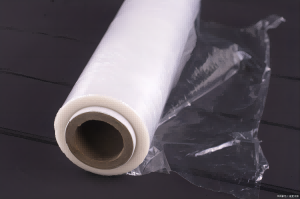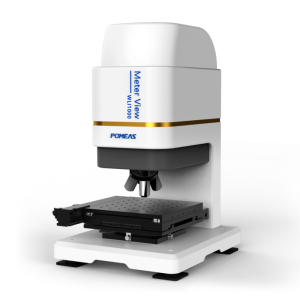Principle of white light interference measurement of film thickness:


White light interferometric film thickness measurement technology is a high precision measurement method based on the fluctuating nature of light and the principle of interference. When white light is irradiated on a transparent film, it is reflected on the upper and lower surfaces of the film. These two reflected light waves will interfere in space due to the optical range difference, forming specific interference fringes.
Specifically, the distribution and spacing of the interference fringes are directly related to the thickness of the film. By analysing the variation of the interference fringes, the thickness of the film can be accurately calculated. The implementation of this principle relies on white light interferometers, which use multicoloured light waves emitted by a white light source to interact with light waves reflected or transmitted from the surface of the object to be measured, forming interference fringes, and thus enabling highly accurate measurements.
For thickness measurement of transparent films, white light interferometry has unique advantages. Because white light contains multiple wavelengths that produce different phase shifts when transmitted through a film, multi-wavelength measurements can be used to more accurately determine the thickness of a film. In addition, white light interferometry is non-contact and does not cause damage to the object being measured, making it suitable for measuring a wide range of materials.


White light interference characteristics:
High precision: White light interferometry can achieve nanometre or even sub-nanometre measurement precision, which is suitable for occasions with extremely high precision requirements.
Fast measurement: White light interference measurement is fast and can realise real-time online measurement, which greatly improves the production efficiency.
Non-contact: White light interference technology adopts non-contact measurement method, which will not cause damage to the measured object and is suitable for the measurement of various materials.
Multi-wavelength measurement: Since white light contains multiple wavelengths of light waves, white light interferometry can be used to more accurately determine the nature or parameters of the object being measured through multi-wavelength measurements.
Flexibility: White light interferometry can be adapted to measure objects of different shapes and sizes, providing great flexibility and applicability.
Ease of operation: White light interferometers usually have an intuitive interface and simple operating procedures, making it easy for users to grasp and use.
With its high accuracy, speed, non-contact and multi-wavelength measurements, POMEAS white light interferometry has been widely used in semiconductor manufacturing, optical coatings, biomedical and material science. With the advancement of science and technology and the development of manufacturing industry, white light interferometry will continue to play an important role in thickness measurement and surface topography analysis.
Product recommendation
TECHNICAL SOLUTION
MORE+You may also be interested in the following information
FREE CONSULTING SERVICE
Let’s help you to find the right solution for your project!


 ASK POMEAS
ASK POMEAS  PRICE INQUIRY
PRICE INQUIRY  REQUEST DEMO/TEST
REQUEST DEMO/TEST  FREE TRIAL UNIT
FREE TRIAL UNIT  ACCURATE SELECTION
ACCURATE SELECTION  ADDRESS
ADDRESS Tel:+ 86-0769-2266 0867
Tel:+ 86-0769-2266 0867 Fax:+ 86-0769-2266 0867
Fax:+ 86-0769-2266 0867 E-mail:marketing@pomeas.com
E-mail:marketing@pomeas.com
